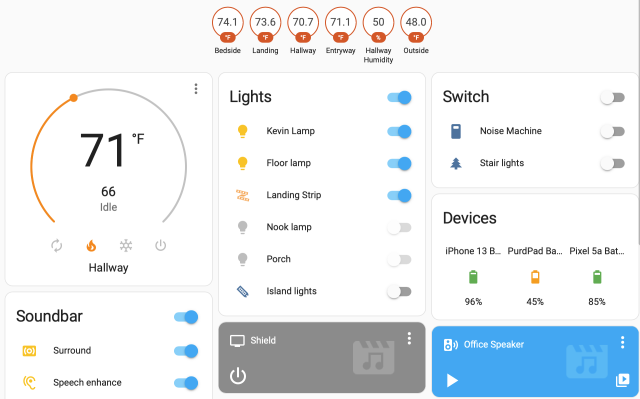
PonyWang/Getty Images
For many people, an automated smart home is about little things that add up to big conveniences over time. Lights turning on when you pull into the driveway, a downstairs thermostat adjustable from your upstairs bedroom, a robot vacuum working while you’re at the grocery store—you put in a bit of setup work and your life gets easier.
What most smart homes also include, however, is a voice assistant, the opposite of a quiet, unseen convenience. Alexa, Siri, Google Assistant: They demand that you learn specific device names and structures for commands, while they frequently get even the most simple command astonishingly wrong. And they are, of course, an always-listening corporate microphone you’re allowing inside your home.
There are ways to keep that smart home convenience while cutting out the conversation. Some involve your phone, some dedicated devices, but none of them involve saying a device’s name. Here’s an overview of the best options available.
DIY controllers

Kevin Purdy
Home Assistant
Home Assistant is a self-hosted webpage that lets you control almost any device with switches and dials. It’s a lot more than that, but it doesn’t have to look like it. Home Assistant is more work to set up than the big tech companies’ home control apps, but it is infinitely configurable. You decide which controls to show and not show (and in what order) and set up automations that don’t require installing each device’s clunky app on your phone. With specific devices, you can also choose to manage everything locally, disconnected from the cloud.
Most enthusiasts run Home Assistant from a Raspberry Pi. Given the device’s current scarcity, it’s good that Home Assistant can also run on other hardware. Home Assistant also makes a dedicated Pi-based box, Home Assistant Yellow, although it’s perpetually on a several-month backorder.
Once Home Assistant is installed and connected to your devices, you’ll have access to your gear through phones, tablets, computers, or a mounted display. You’ll also have easy ways of getting to it from your Android and iOS phone—more on that in a bit.

Hubitat and HomeSeer
If Home Assistant doesn’t appeal to you or you prefer to have a separate piece of hardware to manage your smart home, Hubitat and HomeSeer are notable alternatives. Both tend to focus their support on devices that communicate over Zigbee and Z-Wave radio protocols. And lately, Home Assistant has had more active community development. But both projects offer the same kind of local-web-based control of all your devices, with perhaps even more robust local-only control.